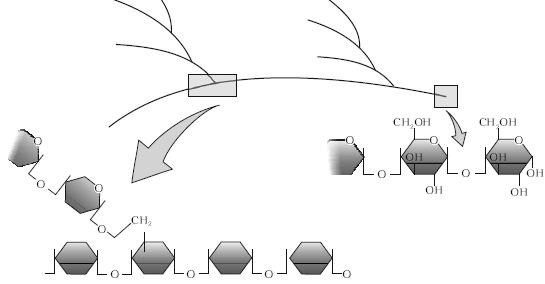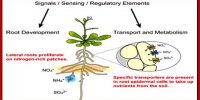The acid insoluble pellet has polysaccharides (carbohydrates) as another class of macromolecules. Polysaccharides are long chains of sugars. They are threads (literally a cotton thread) containing different monosaccharides as building blocks.
For example cellulose is a polymeric polysaccharide consisting of only one type of monosaccharide i.e., glucose. Cellulose is a homopolymer. Starch is a variant of this but present as a store house of energy in plant tissues. Animals have another variant called glycogen. Inulin is a polymer of fructose. In a polysaccharide chain (say glycogen), the right end is called the reducing end and the left end is called the non-reducing end. It has branches as shown in the form of a cartoon (Figure).

Starch forms helical secondary structures. In fact, starch can hold I2 molecules in the helical portion. The starch-I2 is blue in colour. Cellulose does not contain complex helices and hence cannot hold I2. Plant cell walls are made of cellulose. Paper made from plant pulp is cellulose. Cotton fibre is cellulose. There are more complex polysaccharides in nature. They have as building blocks, amino-sugars and chemically modified sugars (e.g., glucosamine, N-acetyl galactosamine, etc.). Exoskeletons of arthropods, for example, have a complex polysaccharide called chitin. These complex polysaccharides are heteropolymers.












